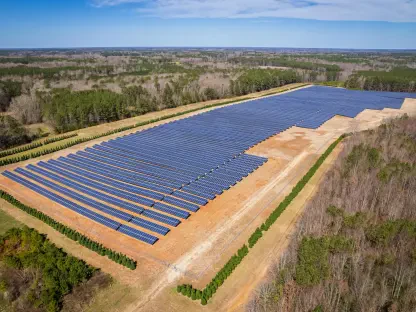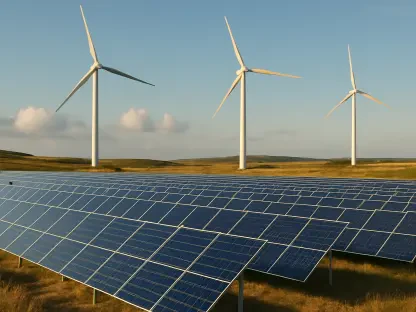Market Overview: The Rising Dominance of Data Centers
In an era where digital transformation dictates economic progress, data centers stand as the backbone of a hyper-connected global economy, powering everything from cloud computing to artificial intelligence innovations. These facilities are no longer just tech infrastructure; they represent a burgeoning market with profound economic implications, driving job creation and infrastructure investments while challenging existing energy grids with unprecedented demand. This market analysis delves into the pivotal role of data centers as economic catalysts, examining current trends, regulatory hurdles, and future projections. By exploring energy consumption patterns, economic impacts, and policy landscapes, the aim is to provide a comprehensive forecast of how strategic regulation can shape this sector’s trajectory, balancing growth with sustainability for stakeholders across industries.
Market Dynamics: Trends, Data, and Economic Impacts
Explosive Growth in Energy Demand
The data center market is witnessing a structural shift in energy consumption, driven by the rapid adoption of digital technologies. According to industry projections, global data center power capacity is expected to surge from current levels to approximately 277 GW by 2035, reflecting a tripling of demand over the next decade. This escalation stems from the intensive needs of AI workloads and cloud services, with individual facilities often requiring between 50 to 300 MW of power on accelerated timelines. Such demand places immense pressure on existing electric grids, exposing vulnerabilities in infrastructure readiness and highlighting the urgent need for market adaptations to support this growth.
Economic Contributions and Regional Hotspots
Beyond their energy footprint, data centers are transformative economic engines, creating high-value jobs and generating substantial tax revenues. A prime example lies in Loudoun County, Virginia, often dubbed “data center alley,” where these facilities account for nearly half of the county’s property tax revenue, contributing billions in new value annually and supporting over 12,000 jobs. This economic windfall has enabled local governments to reduce property tax rates while enhancing public services, showcasing a multiplier effect that benefits entire communities. Regions embracing this market are positioning themselves as tech hubs, attracting ancillary businesses and fostering broader economic vitality.
Regulatory Constraints Impacting Expansion
Despite the economic promise, regulatory frameworks present significant barriers to market expansion. Traditional utility commissions, focused on cost minimization to protect consumers, often discourage proactive grid investments due to rigid cost recovery policies. This conservative approach clashes with the fast-paced needs of data center projects, which typically demand power within 18 months of site selection. As a result, delays or project relocations to more accommodating regions are common, causing states to miss out on potential economic gains. The market is thus at a crossroads, where outdated policies risk stifling growth unless reforms enable anticipatory infrastructure development.
Regional Variations and Market Perceptions
The data center market exhibits stark regional disparities in adoption and regulatory response. Tech-centric areas like Virginia and Texas capitalize on tailored policies and incentives, establishing themselves as leaders in this space, while less digitized regions grapple with skepticism over energy usage and environmental concerns. A pervasive misconception holds that data centers solely benefit large tech corporations, overlooking the community-wide advantages of tax contributions and employment. Industry insights suggest that localized strategies, accounting for grid capacity and economic priorities, are essential to maximize market potential and dispel myths that hinder progress.
Emerging Trends and Future Projections
Looking toward the future, the data center market is poised for further evolution with the rise of AI, edge computing, and 5G technologies fueling additional demand. Sustainability is becoming a core focus, with many operators committing to renewable energy sources to mitigate their carbon footprint. Additionally, regulatory landscapes are beginning to shift, as some states experiment with policies that incentivize grid modernization through smart technologies. Forecasts indicate that utility commissions may increasingly act as economic facilitators, viewing grid resilience as a competitive asset. However, challenges such as cybersecurity risks and the high costs of rapid upgrades loom large, shaping the market’s long-term outlook.
Strategic Reflections: Navigating Growth and Regulation
This analysis underscores the dual nature of data centers as both economic powerhouses and energy-intensive challenges within a rapidly evolving market. The examination reveals how their contributions, from job creation to tax revenues, have transformed regions like Loudoun County, while regulatory inertia poses significant obstacles to capturing these benefits. Key implications point to a critical need for policy innovation, with market participants and policymakers urged to advocate for cost recovery mechanisms that support proactive grid investments. Strategic recommendations include integrating distributed energy resources to enhance efficiency and fostering collaboration between utilities and regulators to pilot cutting-edge grid solutions. These steps aim to ensure infrastructure keeps pace with digital demands, positioning regions to thrive in a competitive global economy while maintaining affordability for consumers.









